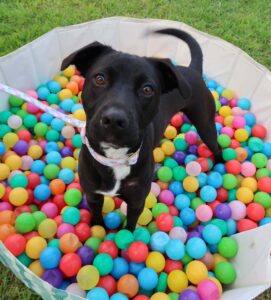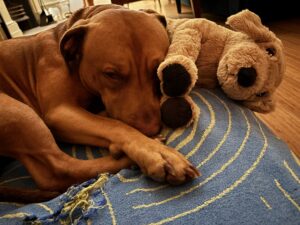 Bringing a rescue dog into your home can be a rewarding experience, offering a second chance at life for a deserving animal and providing your family with a loyal and loving companion. However, ensuring safe and positive interactions between kids and rescue dogs is crucial in creating a harmonious and happy household. Here are some tips and guidelines to help foster safe interactions and build strong bonds.
Bringing a rescue dog into your home can be a rewarding experience, offering a second chance at life for a deserving animal and providing your family with a loyal and loving companion. However, ensuring safe and positive interactions between kids and rescue dogs is crucial in creating a harmonious and happy household. Here are some tips and guidelines to help foster safe interactions and build strong bonds.
Understanding your rescue dog’s background
Rescue dogs can come from challenging backgrounds. Understanding and respecting their past experiences is essential in creating a safe environment for them and your children. Here’s how to get started:
- Learn about your dog’s history: Before bringing a rescue dog home, gather as much information as possible about their past. This can help you anticipate potential triggers and behaviours.
- Be patient and observant: Allow your dog time to adjust to their new environment. Watch for signs of anxiety or discomfort and address them promptly.
Actively supervising and physically separating
The most important thing is to always actively supervise when your child and your dog are together. You can make physical separation easier by setting up playpens and baby gates to create barriers. Make sure babies, young children and dogs are closely supervised at all times (within arm’s reach and without distractions) when they’re together, especially during playtime.
Never place children on top of or next to your dog. Keep their face out of the dog’s face, and get into the habit of putting yourself between the dog and baby (like when you’re sitting on the floor or couch).
Teaching kids about safe interactions
Educating your children on how to interact safely and respectfully with the new family member is vital. Here are some key points to cover:
- Approach calmly and slowly: Teach kids to invite the dog to them instead of approaching the dog. Explain the importance of being calm and avoiding sudden movements or loud noises that might startle the dog.
- Respect personal space: Explain the importance of giving the dog space, especially when they are eating, sleeping, chewing or resting in their designated area.
- Recognise body language: Help children understand dog body language. For instance, a wagging tail does not always mean a dog is happy, and a dog showing teeth is a clear sign to back off.
 Creating a safe space for the dog
Creating a safe space for the dog
Setting up a special and safe area in a quiet place in the home for your dog to retreat to when they need space. It can be a bed or crate. Teach your kids that it’s a special alone place for your dog to go to and that they’re not allowed in it when your dog is there. You can even stick a line of masking tape about a metre from the area to help kids (and adults!) learn boundaries around the dog. They can call the dog over the line to them, and if the dog comes, great! If not, leave them alone (and never enter the space while the dog is in there).
Learning how your dog communicates
Our dogs are always telling us things and use their body to communicate. Some signs can be subtle, so it’s important to make sure that you and all other adults and kids in the household are familiar with your dog’s body language. This will mean you can spot any early warning signs that your dog is stressed, uncomfortable, scared or frustrated, and you can separate them from your child immediately before it escalates.
The earliest signs that your dog is uncomfortable are signs of avoidant behaviour such as turning their face away, leaning their bodyweight away, and trying to walk away.
Other common early indicators that your dog is uncomfortable and should be separated from your child include:
- Stiff body
- Closed mouth
- Turning their head away
- ‘Whale eye’
- Yawning
- Tongue flicks
- Tense facial muscles
- Quick and shallow breathing
- Shaking off
- Excessive grooming, like scratching or licking
Building trust and bonding
Building a strong, trusting relationship between your children and the rescue dog takes time and effort but is incredibly rewarding. Here’s how to encourage bonding:
- Positive reinforcement: Use positive reinforcement techniques to encourage good behaviour in the dog. Praise, treats, and affection can help build trust and reinforce positive interactions.
- Shared activities: Engage in activities that both the dog and the kids can enjoy together, such as gentle play, walks, and training sessions. This helps to build a bond and establish positive associations.
- Respect and compassion: Teach children to be compassionate and empathetic towards the dog’s feelings and needs. This fosters mutual respect and understanding.
Introducing a rescue dog into your family can be a wonderful experience, especially when you ensure that interactions between your kids and your rescue dog are safe and positive. By educating your children, creating a safe environment, and building trust, you can help foster a loving and harmonious relationship that benefits both the dog and your family. Remember, patience and understanding go a long way in helping a rescue dog feel at home and become a cherished member of your family.
If you are concerned about the safety of your child or dog, please contact Ana at behaviour@sdch.org.au as soon as possible.




 MON-SUN:
MON-SUN:
 02 9587 9611
02 9587 9611 INFO@SYDNEYDOGSANDCATSHOME.ORG
INFO@SYDNEYDOGSANDCATSHOME.ORG





